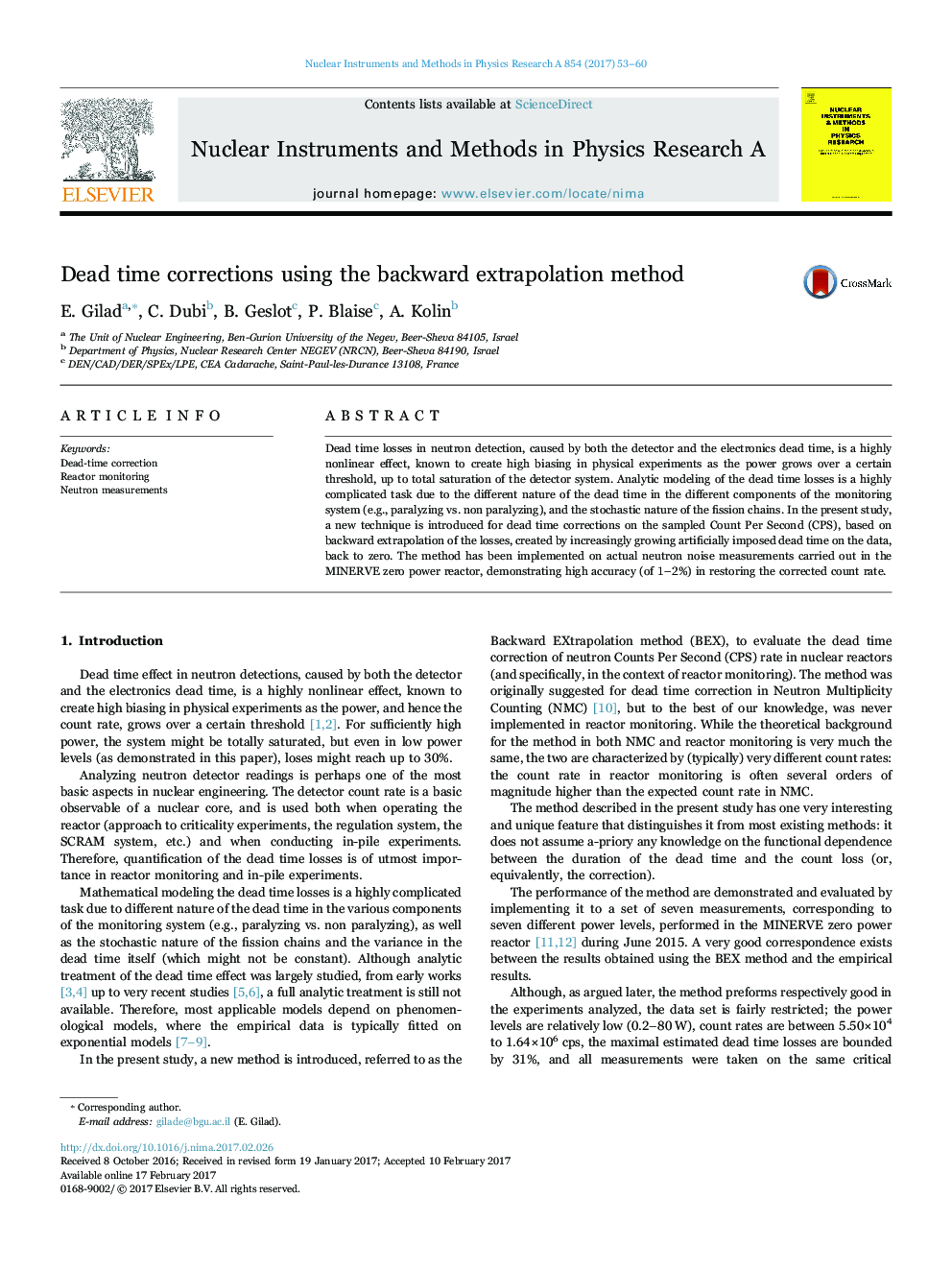| Article ID | Journal | Published Year | Pages | File Type |
|---|---|---|---|---|
| 5493246 | Nuclear Instruments and Methods in Physics Research Section A: Accelerators, Spectrometers, Detectors and Associated Equipment | 2017 | 8 Pages |
Abstract
Dead time losses in neutron detection, caused by both the detector and the electronics dead time, is a highly nonlinear effect, known to create high biasing in physical experiments as the power grows over a certain threshold, up to total saturation of the detector system. Analytic modeling of the dead time losses is a highly complicated task due to the different nature of the dead time in the different components of the monitoring system (e.g., paralyzing vs. non paralyzing), and the stochastic nature of the fission chains. In the present study, a new technique is introduced for dead time corrections on the sampled Count Per Second (CPS), based on backward extrapolation of the losses, created by increasingly growing artificially imposed dead time on the data, back to zero. The method has been implemented on actual neutron noise measurements carried out in the MINERVE zero power reactor, demonstrating high accuracy (of 1-2%) in restoring the corrected count rate.
Related Topics
Physical Sciences and Engineering
Physics and Astronomy
Instrumentation
Authors
E. Gilad, C. Dubi, B. Geslot, P. Blaise, A. Kolin,
